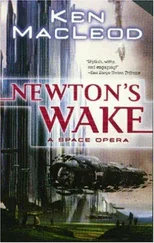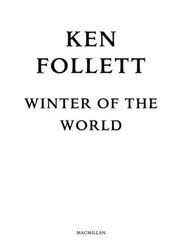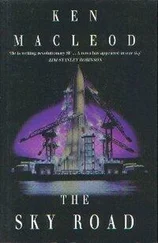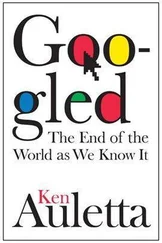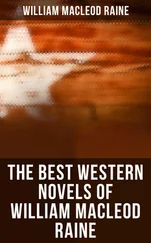Out here… Let me just pause for a moment and clarify a point of terminology. Words are important. I see from a quick search through the biologs that most of you refer to us in the cones as “in there.” We’re not “in there.” You are: you’re in there in the habitat. We’re out here .
It’s not outer space. But it’s hard vacuum (well, hard-ish), it’s free fall (well, microgravity), and it’s black all around. An aperture on the sunline burns in the sky like a nearby sun. The rocks we’re working on are hundreds of metres across. Most of them are less than a kilometre apart from each other, so it all looks like a child’s cartoon illustration of an asteroid belt rather than the real thing, with millions of klicks between one and the other. It’s a bit like being in a Ring, but without the collisions and the ablation and the micrometeorites going like sandblasters and the dying full of holes in a cloud of blood and stuff.
But it’s still the real thing. If you want the full illusion of being outside, you can tune your eyes to the external view and see the stars — and those of the planets that are visible at the moment — just as they would be if they were outside your faceplate. That’s cool, but admittedly you can do that anywhere in the ship. And somehow, we don’t feel the need to. Being in this enormous space is enough.
Because we really are pioneering. These rocks have never even been prospected! If they’d ever had to be processed, they’d have been refined and sifted for useful minerals and organics before the slag was thrown in the drive. But I’m sure a lot would have been missed. Apart from anything else, we’re doing real science. These rocks are after all from the Red Sun system, and some of them date back to its formation, and we’re actually finding out stuff that I’ll bet their own scientists back there haven’t got round to yet. Well, maybe not, but it’s new to us, and it’s fun finding out secrets four billion years old. Delicate crystal formations; complex organic molecules; microscopic bubbles trapped in the rock or ice, of gases with curious isotope ratios; shock patterns that indicate or suggest that at least one rock out here was chipped off a larger body, which some have identified from the records as likely to be Red Sun VII 14.
All right, that’s exciting to me, but maybe not to you, and anyway we’re not out here to do science. Science is a sideshow. The main event — events, rather — are mining and extracting, synthesising and building. We’re building habitats! Real habitats we’re actually living in, and that one day — soon, I hope — may orbit freely around the Destiny Star on their own.
Nobody’s got the habitat of their dreams. (Mine needs a much bigger asteroid.) Everybody has had to divvy up or share. For this rock we’re on it’s a team: me, Grant, a few people from Far Crossing, and the New Lamarck crowd. Of course there are more machines than people, which makes it feel more crowded but also makes things happen fast. We’ve already got a beautiful cluster of diamond bubbles that look green from outside with all the plants within.
Nobody’s doing the exact project they’d planned. Again, most of these are tagged to specific features or moons or rocks, so they’re not relevant at the moment. That doesn’t matter. There’s a whole lot of projects we’re working on with the crew, both because it’s valuable experience and because it’s trade for the expertise and resources we get from them. (Any accountancy software experts still hesitating? There’s work for you out here.)
Oh, and speaking of work, anybody with power-engineering ambitions should just drop everything and emigrate here, because you’ll never get a better chance to hone your skills and serve a sound apprenticeship with old crew hands. Fusion power plants aren’t strictly necessary here, but they’ll be useful in the future. Same goes for missile and laser batteries. We’re building plenty of them, there’s a whole industry going on (amazing the explosives and fuels you can cook out of gunk from carbonaceous chondrites, and the reaction and refinery paths are way complex and cool). They’ll be sold around when we move out. Likewise the power plants. Like I said, the opportunities in that line are amazing. We are building a lot of fusion power plants.
It had been a long three months for the Red Sun Circle and its associates. For a time the entire scheme had hung in the balance, with the more energetic elements of the younger generation divided between those who most wanted to get on with constructive work, and those whose top priority was ending the emergency and voting out the Council. Synchronic wasn’t sure how much effect her caredaughter’s passionate appeals for the former option had had, but she couldn’t discount them.
Now the stream of young settlers to the hollow spaces of both cones was steady; the lifting of comms restrictions had allowed first an outpouring of discontent and then its gradual fading; and among the majority of the voting-age cohort who remained behind, a growing minority had begun to voice a grudging recognition of the wisdom of the founders in vetoing colonisation until future relations with the aliens could be sorted out.
Her one disappointment was that almost all the ship generation had lost all interest in the Destiny II virtualities now that they no longer had a live feed. The archives of the virtualities were vast, and in large part unexplored. An immense amount of information of undeniable future use lay untapped. She’d expected that this hoard of insight into the very first alien civilization — and indeed multicellular biosphere — to come within the ken of humanity would lure many bright young minds. But few indeed still entered it. It was as though it was old news, and that only the constant unfolding of the planet’s present moment could seize attention.
She’d have been tempted to write this off as the superficiality of the youth of today, but her own contemporaries in the founder generation were almost as remiss. They too were entranced by incoming live data, in their case from other planetary probes and system surveys. Speculation on resources remained brisk, though with long futures. There was even a market in shorter futures, betting on the possibility that the embargo would be reversed; Council discouragement and disapproval of this dubious activity had merely and predictably given rise to secondary and tertiary markets in moral hazard.
So she herself had taken to doing what she’d once hoped the ship generation would become absorbed in doing. In hours of relaxation and recreation she roamed the vault of uplinked and recorded and synthesised impressions, trying to make sense of the bat people’s world.
Today she haunted the simulacrum of an upland settlement, somewhere in the typical altiplano of the continental hinterlands. Scrub and brush on the hills, a richer and greener vegetation in the hollows that might have been the local analogue of grass, grazed by the big four-footed beasts. A narrow, rickety tower on a hilltop, surrounded by fenced and hedged orchards and a scatter of low sheds. You couldn’t call the place a farm: the bat people didn’t practice agriculture. They tended tiny plots of herbs and berries; they built fences and walls that kept the grazers out of patches of ground, wherein fruit trees sprang up, with parabolic inverted-umbrella layers of branches turned to the sky like some ancient SETI radio-telescope array; they herded and hunted, chivvied and chased the grazers, swooping and hallooing around them, driving them with slashing clawed kicks and occasional bites that looked like a vampiric refreshment. When a beast was selected for slaughter, and driven close to the settlement and set upon with tooth and claw and blade, the crowd of wings and the frenzy was such that it seemed a surprise how much meat remained to be cut up and carried off, to be hung and salted and smoked and sent on its way to the cities on the occasional passing cart hauled by machine or slave traction.
Читать дальше


